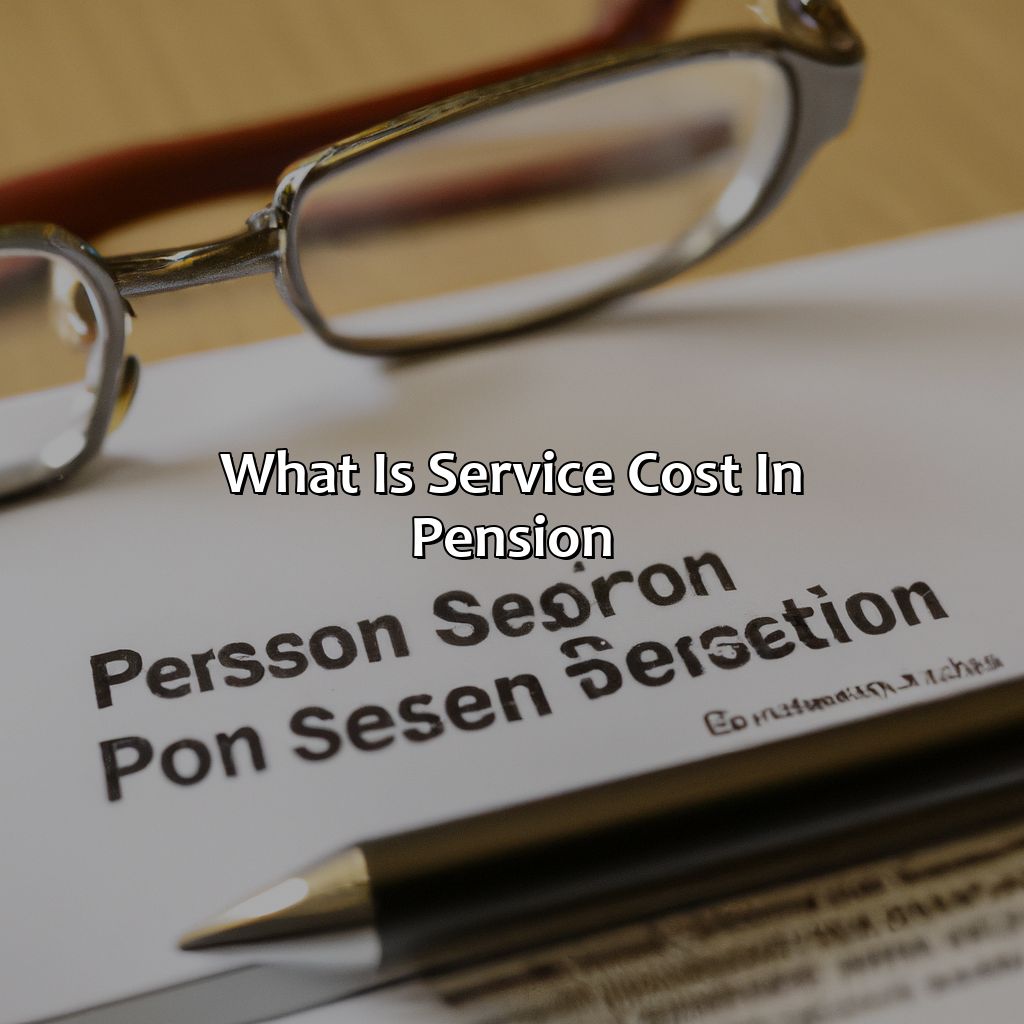What Is Service Cost In Pension?
Key Takeaway:
- Service cost in pension refers to the cost of providing pension benefits to employees over a specific period of time, often a year. It is one of the key components of pension cost and is used to determine the contributions that employers and employees need to make to fund pension benefits.
- Service cost is calculated using actuarial assumptions such as the discount rate, mortality rates, and employee turnover rates. Past service cost relates to prior pension benefits earned by employees, while present service cost relates to the pension benefits to be earned by current employees in the future.
- The factors that are included in the calculation of service cost may vary depending on the nature of the pension plan, but typically include the employee’s salary, years of service, and the expected cost of providing benefits. Understanding service cost is important for employers as it can impact the funding level of their pension plan.
Do you want to know the cost associated with your pension? This article will guide you through the details of service costs in pension plans, helping you make informed decisions for your retirement. You can be sure of understanding the fees associated with pension plans.
What is service cost in pension?
The service cost in pension refers to the cost of providing pension benefits to employees for the services they render. This cost represents the present value of the expected future payments that a pension plan provides to its members. Pension plans use actuarial assumptions to calculate the service cost, including factors such as employees’ ages, salary levels, and service expectations. Additionally, the service cost in pension reflects the financial burden that employers have to bear to ensure employees’ retirement benefits are secure.
To determine the service cost, pension plan administrators consider various factors aside from actuarial assumptions. These factors include economic conditions, investment returns, mortality rates, and changes in regulations. As a result, changes in these factors can significantly affect the service cost in pension, which can impact both employees and employers alike. To minimize risks associated with the service cost in pension, administrators rely on sophisticated models to determine the funding required to cover future pension obligations.
If you want to know more about the basic pension rate, follow the link.
Despite efforts to provide adequate funding and security to employees’ retirement benefits, challenges can arise that can lead to pension plan failures. An example of such a case is the Detroit municipal bankruptcy, where retirees were at risk of losing significant portions of their pension benefits. Therefore, governments, employers, and employees must work together to ensure that the funding of pension plans remains adequate and secure.
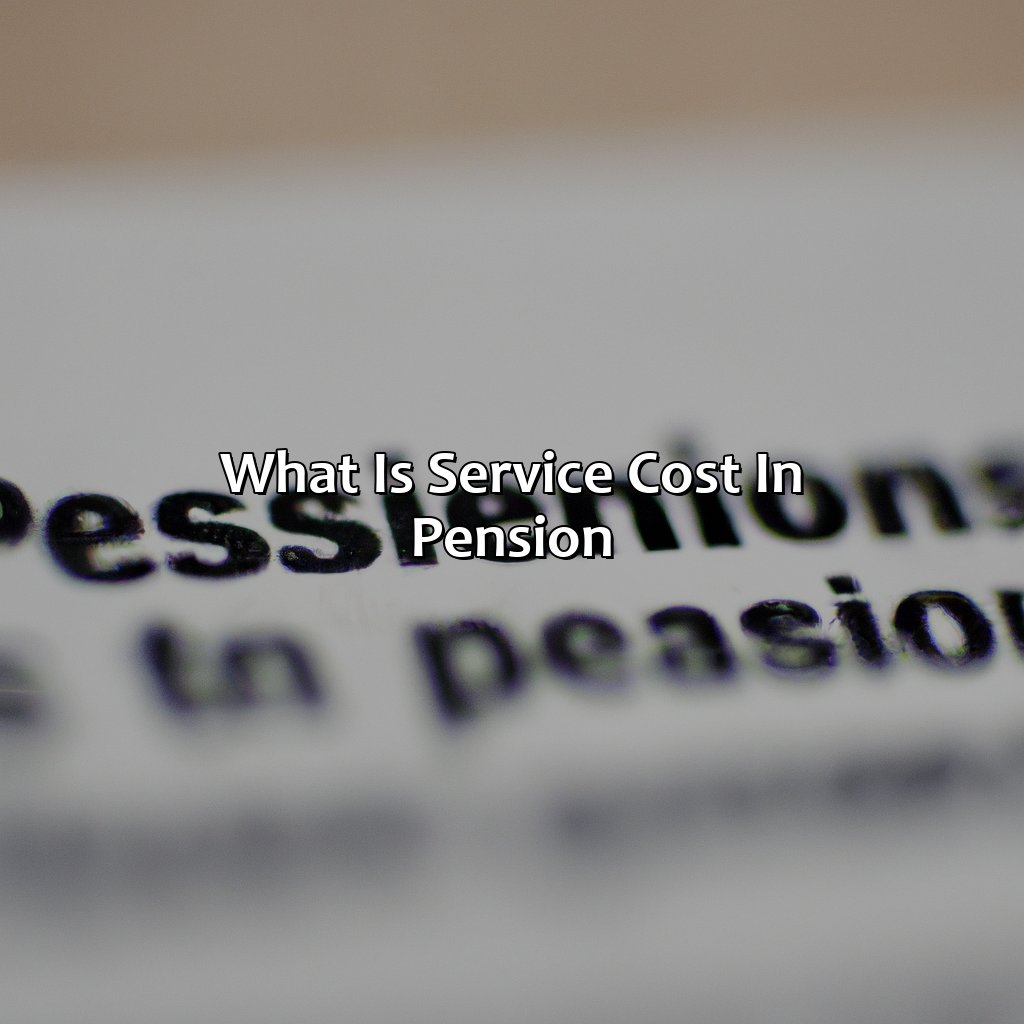
Image credits: retiregenz.com by Adam Washington
Definition of service cost
Service cost refers to the present value of pension benefits that an employee is expected to receive in the future for services rendered during the current period. It is an important component in the calculation of the total pension cost that an employer pays for its employees. This cost includes the pension benefits of both active and non-active employees, which can be determined based on actuarial assumptions such as mortality rates and discount rates. The service cost is recognized as an expense over the expected service life of the employee. Keep in mind that this cost is distinct from other components of pension cost such as interest cost and gain or loss on plan assets.
A key point to remember when calculating service cost is to consider the specific pension benefit formula outlined by the employer in the plan document. This formula may vary depending on factors such as the employee’s age, salary, and years of service. It is important to evaluate the formula regularly to ensure its continued relevance and effectiveness in meeting the needs of both employees and the employer.
Pro Tip: Accurately calculating service cost is crucial to both employers and employees in terms of planning for retirement. By correctly defining and measuring this cost, both parties can ensure that they are meeting their obligations and expectations.
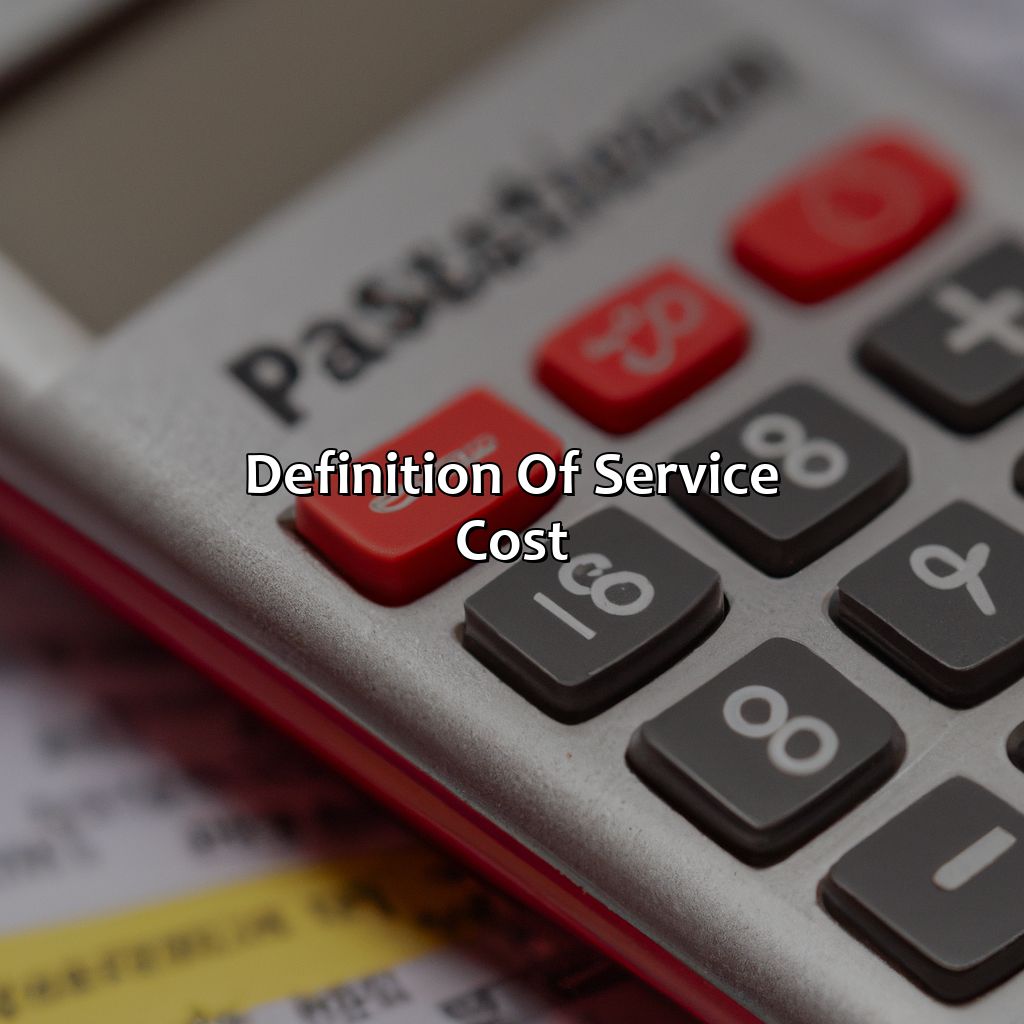
Image credits: retiregenz.com by James Woodhock
Types of service cost
Want to explore different types of pension service costs? Then delve into past service cost and present service cost. These sub-sections offer a comprehensive overview of all the associated costs.
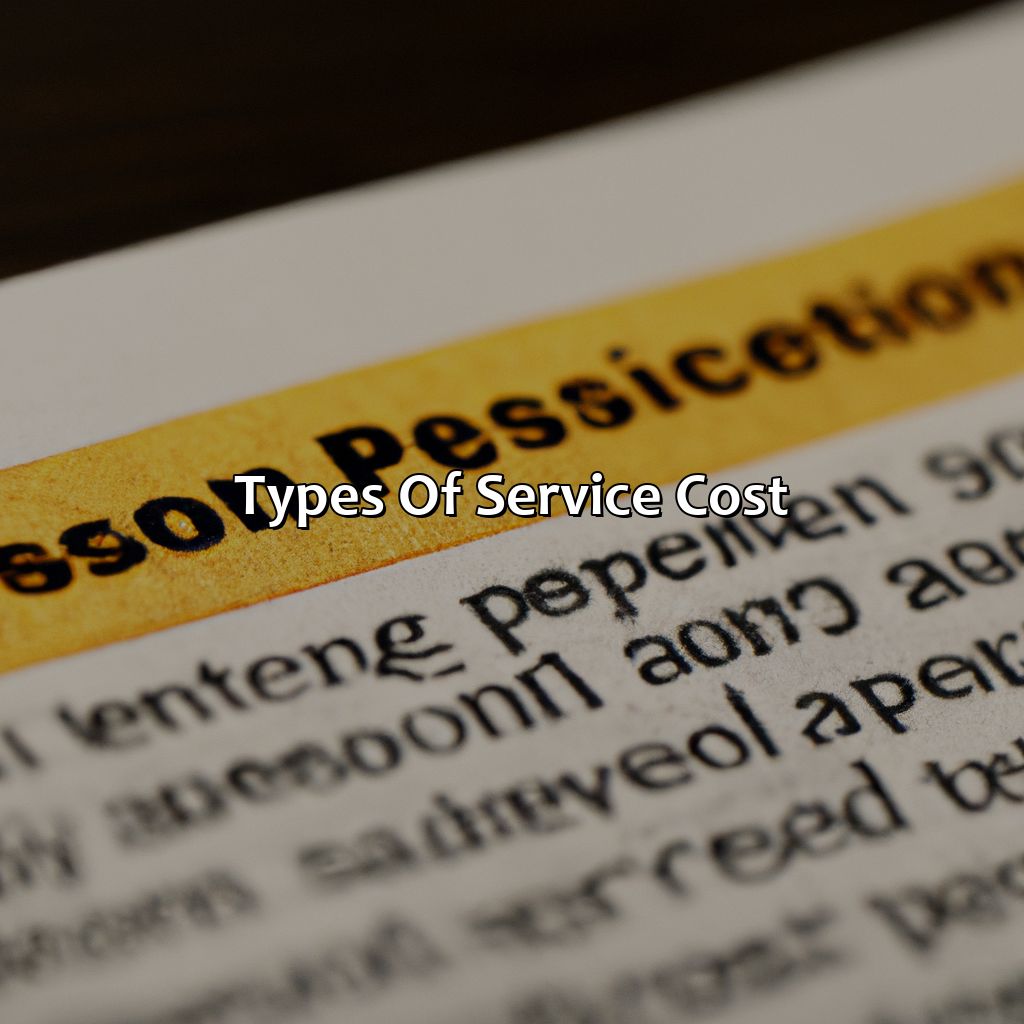
Image credits: retiregenz.com by Yuval Washington
Past Service Cost
The expenses related to the benefits earned by an employee before the current reporting period are known as Past Service Costs. These costs arise when there is an amendment in the pension plan or if the employee has been employed for a long time.
The following table depicts an example of how Past Service Cost is calculated:
| Salary | Years of Service | Pension Plan Factor |
|---|---|---|
| $100,000 | 10 | 2% |
| $200,000 | 5 | 1.5% |
In this table, the salary and years of service for two employees are given, along with a Pension Plan Factor. The formula used to calculate Salary Sacrifice Pension is [(Pension Plan Factor) x (Years of Service) x (Salary)] - (Value of Benefits Earned).
It’s essential to note that these costs result in increased expense recognition in a company’s statement of earnings, leading to lower reported profits.
Past Service costs can add up over many years and lead to immense liabilities for a company’s defined benefit pension plan, affecting future pension contributions.
If you’re wondering how much is the pension in the USA, it depends on various factors such as your age, income, and length of service. It’s important to plan for your retirement and understand the benefits you’ll receive from your pension plan.
In history, various scandals revolving around Past Service cost accounting practices have led companies astray. One such infamous case was WorldCom fraud where they had disregarded past service costs to inflate their financial statements. If you’re wondering about how much is the state pension in Ireland, it’s important to consider past service costs as well.
Present service cost: the price you pay now for a future retirement that may or may not be worth it. Better start saving those pennies!
Present Service Cost
The cost associated with the current period of service, known as the Present Service Cost, is calculated based on a number of factors. These factors include the employee’s salary level, the expected rate of salary progression, and various demographic assumptions such as life expectancy and retirement age. The Present Service Cost is used to determine the amount that should be contributed to a pension plan in order to fund an employee’s future benefits.
Additionally, there are other types of service costs related to pensions, including Past Service Costs and Future Service Costs. The Past Service Cost is the cost associated with retroactive changes made to pension plans that increase benefits for employees in recognition of previous years of service. The Future Service Cost is the cost associated with providing additional benefits to employees for their years of service going forward.
Interestingly, before the change in accounting standards in 2012, companies were not required to record their future pension obligations on their balance sheets. This led to some major corporations significantly underfunding their pension plans, which ultimately led to significant financial strain when it came time to pay out those pensions.
Wondering how much is the retirement pension in USA?
If you want to know more about pension expenses, you can click here.
Calculating service cost is like trying to decipher a cryptic message from your pension fund – it’s complicated, frustrating, and often feels like you need a codebreaker to figure it out.
Calculation of service cost
Calculate pension service cost? You need to know the elements!
Service cost is based on several factors. We’ll discuss them here, no fluff!
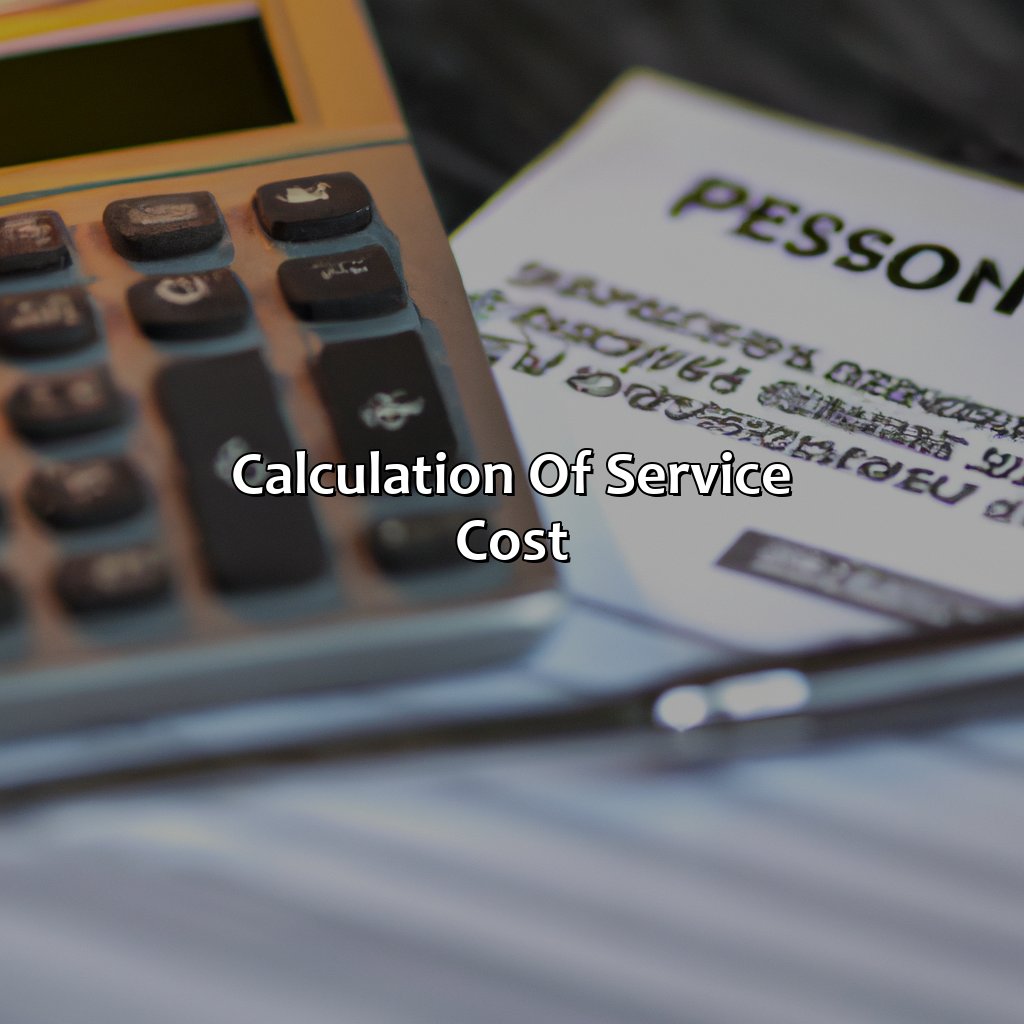
Image credits: retiregenz.com by Adam Woodhock
Factors included in service cost
When calculating service cost, several factors need consideration. It involves assessing the cost of providing pension based on current and future assumptions regarding demographics, life expectancy, pay increases and investment returns. Here are some contributing elements to consider for accurate calculation:
| Factors Included in Service Cost | |
| Demographic changes | Life expectancy assumptions |
| Pay increases projections | Investment return estimates |
In addition to those mentioned above, other important aspects involved in assessing the service cost include actuarial valuations and testing carried out regularly by trustees, scheme administrators and fund managers. These assessments ensure that there are sufficient funds available to meet future pension obligations. Knowing the history behind what led to the concept of service costs is essential. Governments established these requirements to ensure that public sector pensions were paid for by its members over a reasonably short period rather than being passed on as unaffordable burdens for future generations or requiring disproportionate taxpayer funding. With service costs weighing on pension funding, it seems retirement plans have one foot in the grave and the other on a banana peel.
Impact of service cost on pension funding
Pension Funding and the Effects of Service Costs
Service costs play a crucial role in determining pension funding. They represent the future liabilities associated with employee services that are yet to be compensated. Service costs impact pension funding by increasing the expense of pension benefits.
To better understand its effects on pension funding, it is important to consider how pension works in the UK and how service costs are calculated. They take into account various factors such as employee salaries, age, and tenure. With an increase in these variables, the service costs increase as well which ultimately affects the overall pension funding.
Moreover, service costs often fluctuate due to demographic and economic changes. Preparing for these changes by regularly monitoring and adjusting pension plans can help mitigate any potential negative impacts.
To ensure stable pension funding, it is suggested to design pension plans that are flexible and responsive to changes. Employers should consider offering variable benefit plans that adjust based on the financial health of the plan. Additionally, investing in low-risk assets can further decrease the possibility of funding shortages.
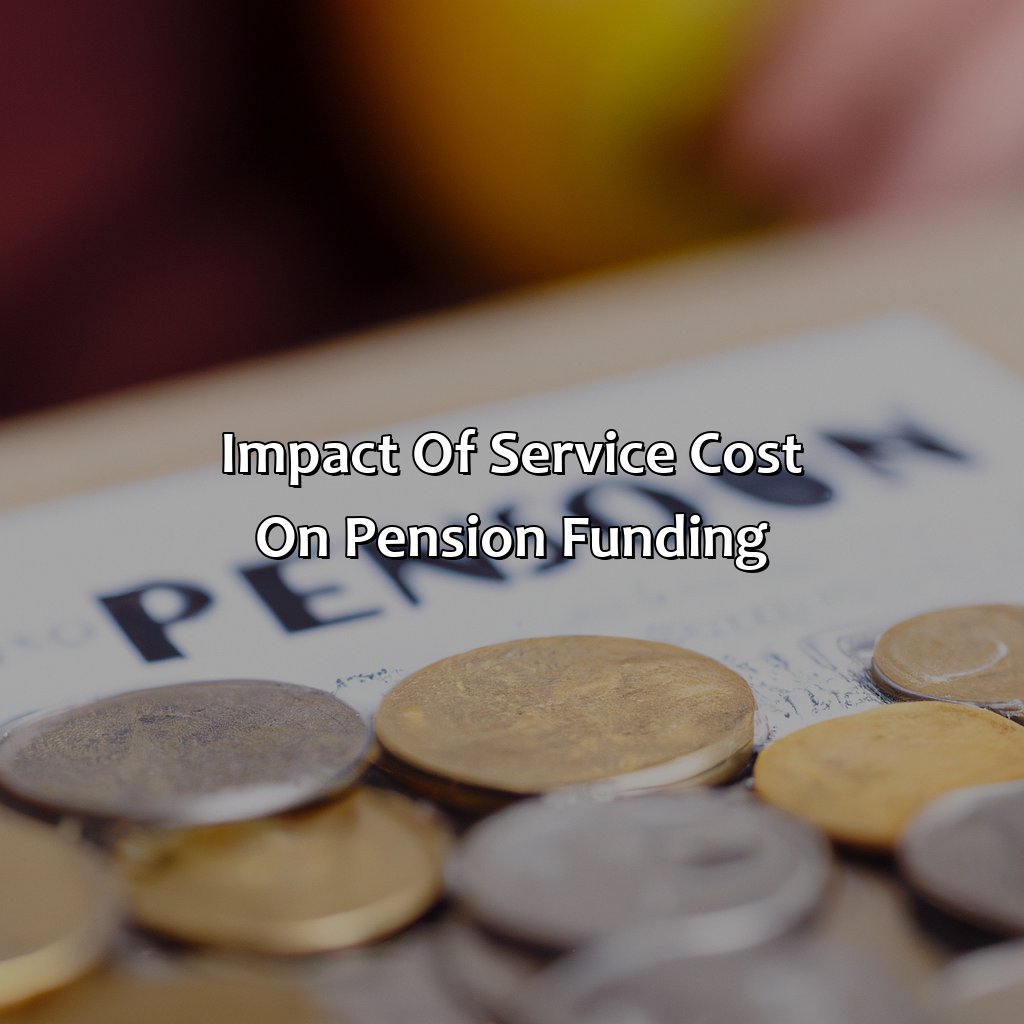
Image credits: retiregenz.com by Joel Woodhock
Importance of understanding service cost in pension
Understanding the Significance of Service Cost in Pension
The significance of comprehending service cost in pension cannot be neglected. It is essential for individuals to have a thorough understanding of the concept in order to make informed decisions about their pension. Knowing the service cost helps individuals understand how their pension is performing and how much is a USPS pension so they can plan accordingly.
Moreover, how much a government pension costs can vary for each pension scheme and can have a significant impact on the pension’s overall performance. Therefore, it is critical to assess the service cost of various pension schemes before choosing one.
Additionally, knowing how much is the state pension is important for individuals who are planning to retire soon. This is because the service cost will affect the level of benefits they will receive upon retirement.
In a notable case, a well-known pension fund was charging a high service cost, resulting in reduced returns for its members. This discovery led to many members of the scheme to switch to other pension schemes with lower service costs.
Understanding service cost in pension is crucial for planning and making informed decisions. It is wise to do thorough research and compare service costs before choosing a pension scheme. The right decision can lead to long-term benefits in terms of financial stability during retirement.
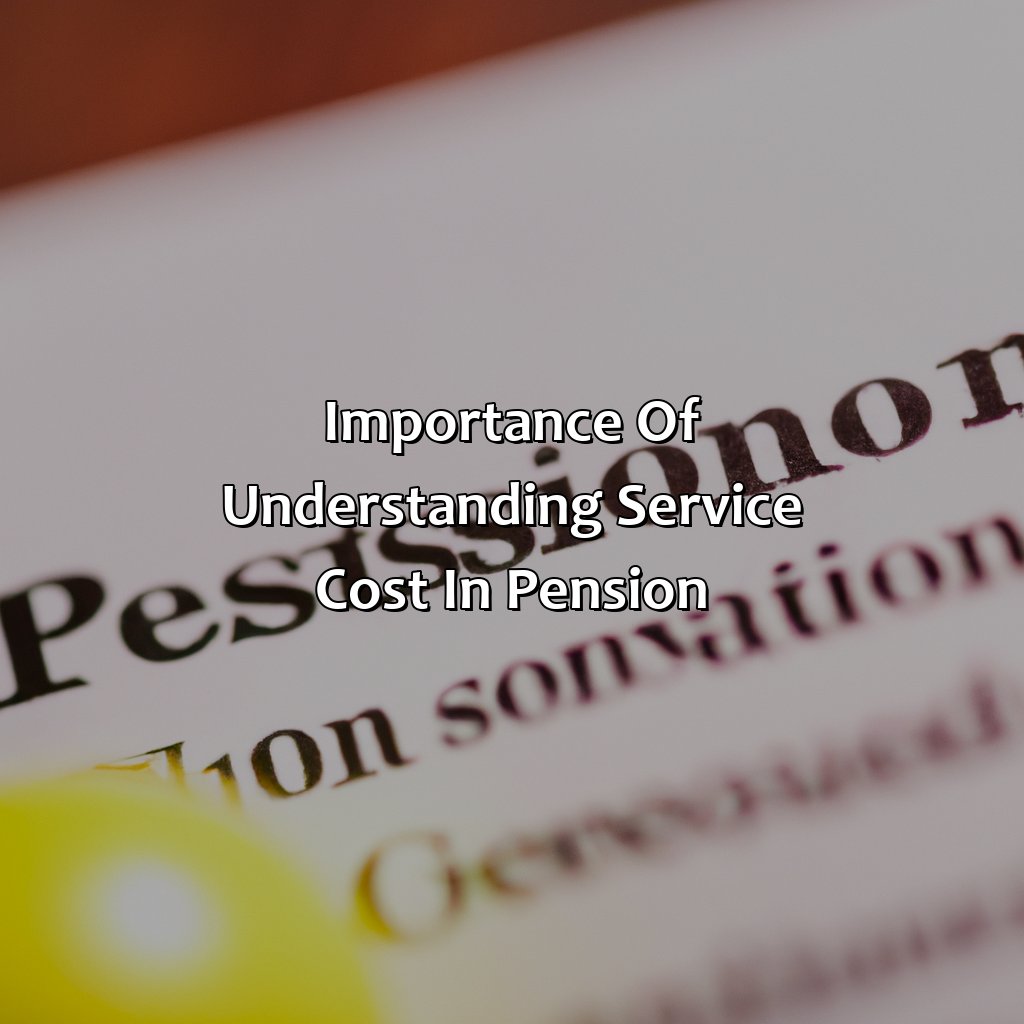
Image credits: retiregenz.com by Joel Woodhock
Five Facts About Service Cost in Pension:
- ✅ Service cost in pension is the amount paid by employers towards the pensions of their employees. (Source: The Pensions Regulator)
- ✅ The service cost in pension calculation takes into account the current value of the pension benefits promised to employees and the expected investment returns on the pension fund. (Source: KPMG)
- ✅ Service cost in pension is a significant expense for employers, especially those with defined benefit pension plans. (Source: Willis Towers Watson)
- ✅ Changes to accounting standards, such as IFRS 9 and IFRS 17, have impacted the way service cost in pension is calculated and reported. (Source: PwC)
- ✅ Managing service cost in pension requires careful monitoring of pension scheme investments, actuarial assumptions, and regulatory compliance. (Source: Deloitte)
FAQs about What Is Service Cost In Pension?
What is service cost in pension?
Service cost in pension is the present value of benefits that employees earn in a year of service under a pension plan. It is an accounting calculation used to spread out the cost of providing pension benefits over the course of the employee’s career.
How is service cost calculated?
Service cost is calculated using actuarial assumptions such as the discount rate, expected return on plan assets, and changes in employee demographics. These assumptions are used to determine the present value of the expected cost of providing pension benefits for each year of service.
Why is service cost important?
Service cost is important because it determines the cost of providing pension benefits to employees over the course of their careers. This cost is then spread out over multiple years, allowing employers to budget and plan for future pension expenses.
What factors can affect service cost?
Several factors can affect service cost, including changes in interest rates, changes in employee demographics, changes in legislation, and changes in plan design.
How does service cost differ from other pension costs?
Service cost is just one component of total pension cost. Other costs include interest cost (the cost of providing benefits in the future), expected return on plan assets (the return expected on the assets in the pension plan), and amortization of prior service costs (the cost of benefits earned by employees before a plan change).
Can service cost change over time?
Yes, service cost can change over time as actuarial assumptions are updated or as there are changes in employee demographics or plan design. It is important for employers to regularly review and adjust their pension plan assumptions to ensure that their pension costs are accurately reflected.
